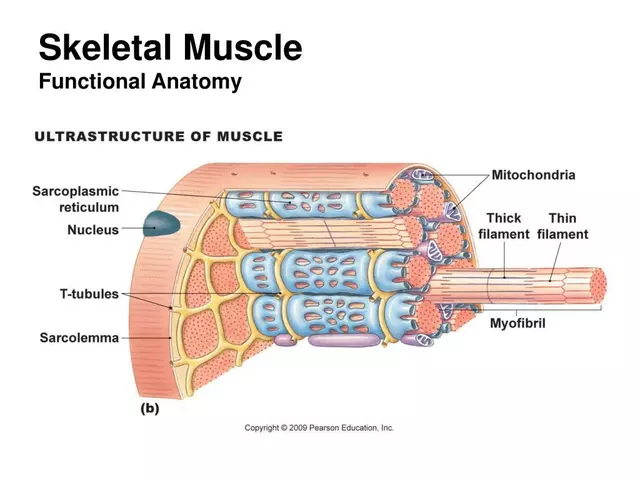When you hear intermittent fasting, you might think of skipping breakfast or going 16 hours without eating. But that’s just the surface. The real science behind it isn’t about starving yourself-it’s about syncing your eating window with your body’s natural rhythm to burn fat more efficiently. And yes, it works. Not because it’s a magic trick, but because it changes how your body uses energy. Most people start intermittent fasting hoping to lose weight. And they do. On average, people who follow time-restricted eating (TRE) lose 1.7 to 2.5 kilograms more over several months than those who eat without any schedule. That’s not a small difference. It’s the equivalent of dropping a full suitcase of clothes off your frame. But here’s what most guides don’t tell you: it’s not about eating less. It’s about eating at the right time. Time-restricted eating means you only eat during a set window each day-usually between 8 and 12 hours. The most popular version is 16:8, where you fast for 16 hours and eat during an 8-hour window. That might mean skipping breakfast and having your first meal at noon, then finishing dinner by 8 p.m. It sounds simple. But the power isn’t in the hours-it’s in the biology. Your body runs on a 24-hour clock called the circadian rhythm. This internal timer controls everything from sleep to digestion to hormone release. When you eat late at night, you’re fighting that clock. Your insulin sensitivity drops, your metabolism slows, and your body starts storing fat instead of burning it. But when you eat earlier in the day-say, between 8 a.m. and 4 p.m.-your body responds better. A study from UTSW Medical Center found that people who ate within this window improved insulin sensitivity by 12.4%. That’s a measurable, real-world benefit. Not all intermittent fasting methods are the same. There are three main types backed by science: time-restricted eating (like 16:8), alternate-day fasting (one day normal eating, the next day eating only 500-600 calories), and the 5:2 method (five days normal, two days very low calorie). The Harvard T.H. Chan School of Public Health reviewed 99 clinical trials involving over 6,500 people. Their conclusion? All three methods help with weight loss. But alternate-day fasting led to 1.3 kilograms more weight loss than traditional calorie counting. That’s significant. But here’s the catch: you don’t have to do the hardest version to get results. The 16:8 method is the most studied, the most sustainable, and the one most people stick with. In fact, a meta-analysis from the NIH found that nine out of 13 studies on time-restricted eating used the 16:8 model. Why? Because it fits into real life. You can still have dinner with family. You can still enjoy coffee in the morning. You just don’t snack after 8 p.m. What about hunger? Yes, the first week is rough. Around 78% of people report intense hunger in the first few days. But your body adapts. Ghrelin-the hunger hormone-levels drop after about 72 hours of consistent fasting. That’s why most experts recommend starting slow. Begin with a 12-hour eating window (for example, 8 a.m. to 8 p.m.), then gradually shrink it to 10 hours, then 8. Don’t jump into 16:8 on day one. You’ll quit. Another myth: you can eat anything during your eating window. You can, but you won’t lose weight if you do. Intermittent fasting isn’t a license to binge on pizza and ice cream. The same Harvard review showed that people who ate whole foods-lean protein, vegetables, healthy fats-lost more weight and improved their cholesterol more than those who didn’t. Protein intake matters too. To keep muscle mass while losing fat, aim for 1.2 to 1.6 grams of protein per kilogram of body weight each day. For a 70 kg person, that’s 84 to 112 grams of protein daily. What about side effects? Most people feel fine. But some report energy crashes, especially during the first two weeks. That’s normal. Your body is switching from burning sugar to burning fat. It takes time. Staying hydrated helps. Many people mistake thirst for hunger. Drink water, herbal tea, or black coffee during your fast. No sugar. No cream. Just plain. Social life? That’s the biggest hurdle. One Reddit user wrote: “Dinner invitations became impossible to accept without explaining my eating schedule.” And they’re not alone. A Harvard study found that 23.4% of people dropped out of alternate-day fasting because it messed with family dinners or weekend plans. If you’re someone who eats out often or has kids with unpredictable meal times, 16:8 might be easier than alternate-day fasting. You can adjust your window to fit your life. Maybe you eat from 11 a.m. to 7 p.m. That’s still within the recommended range. Who shouldn’t try it? Pregnant women, people with a history of eating disorders, and those with type 1 diabetes should avoid it unless under medical supervision. The Endocrine Society’s 2025 study found that while people with type 2 diabetes saw improved blood sugar levels, they also reported higher hunger scores. If you’re on insulin or other diabetes meds, talk to your doctor before starting. The good news? It’s getting easier. Apps like Zero and Timeular help track your fasting window. The Intermittent Fasting subreddit has over 1.2 million members as of mid-2025. But not all advice there is good. Only 37.2% of top posts cite scientific sources. Stick to the basics: eat within a window, focus on whole foods, drink water, and give it at least four weeks. And what about long-term results? That’s the big question. Most studies last less than 24 weeks. The NIH is now funding a $2.4 million study to track shift workers using TRE over two years. Early data shows weight regain is common-43.2% of people who lost weight on intermittent fasting regained it after a year. But so did 38.7% of people on traditional diets. The difference? People who stuck with TRE long-term kept more weight off than those who quit. So is it worth it? If you want a flexible, no-calorie-counting way to lose weight and improve your metabolic health, yes. You don’t need to be perfect. Miss a day? Skip a meal? That’s fine. The goal isn’t to be rigid-it’s to create a rhythm that works for your body and your life. Start small. Eat earlier. Cut out late-night snacks. Drink water. Give it four weeks. If you feel better, sleep better, and lose a few pounds? You’ve found something that sticks. And that’s more than most diets can say.

Nov, 23 2025


